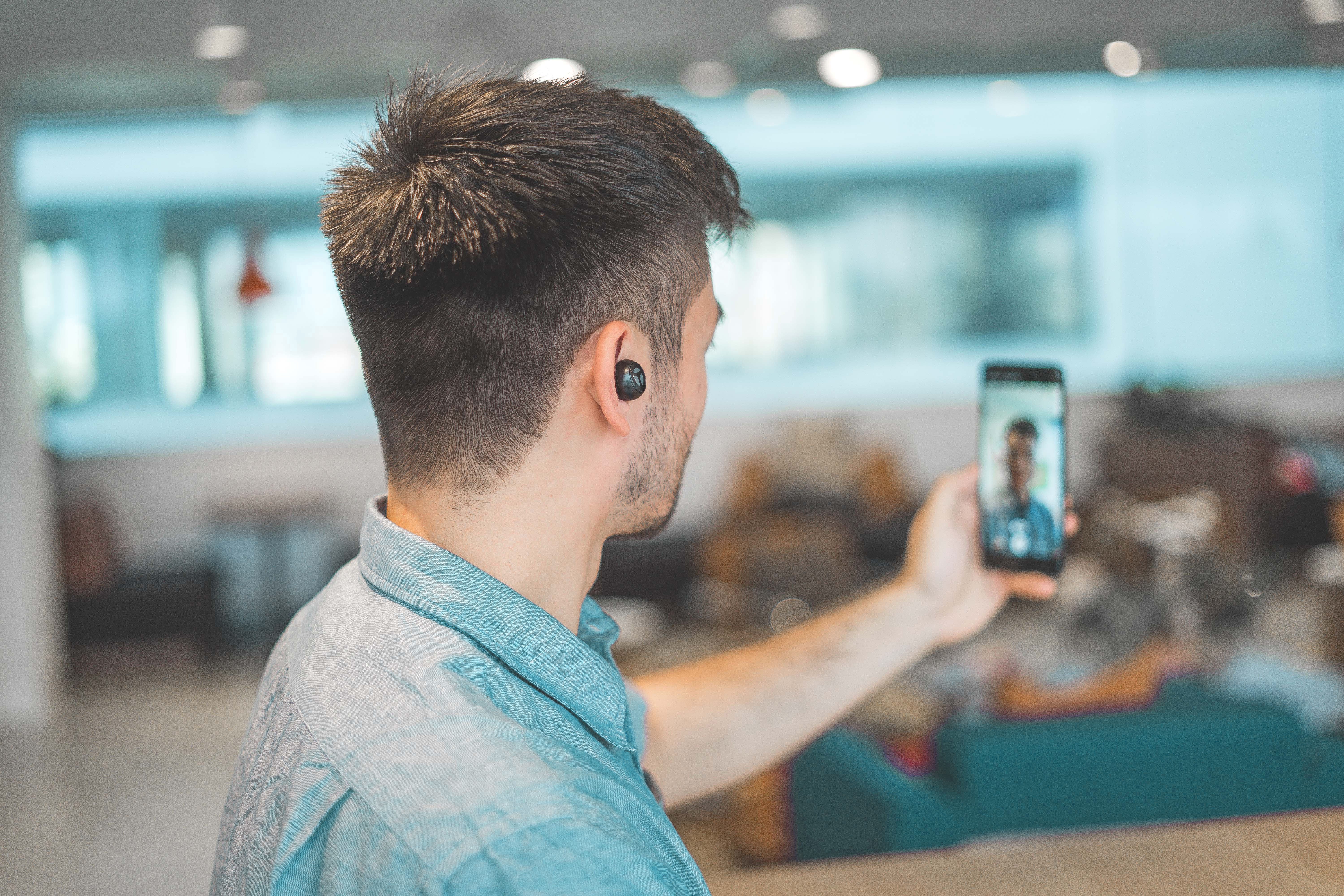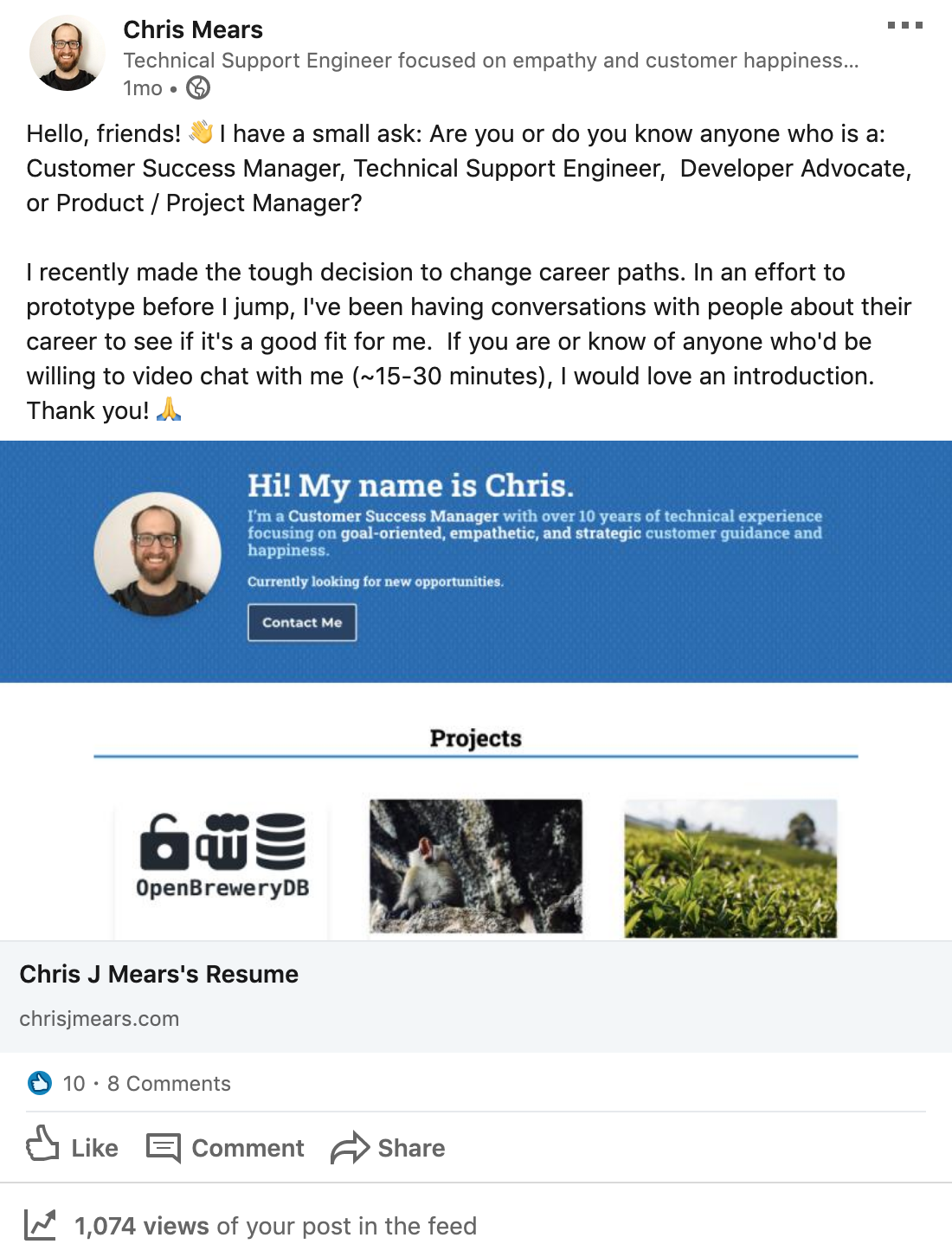
Update: There is a five-year follow-up to this post, The Power of “No”: How Life Design Interviews Shaped My Career Over 5 Years.
When I decided I needed to make a career change, I panicked a little. What should I do? Should I go back to school? Should I take a boot camp workshop? Should I sell everything and move to remote Alaska with my dog?
Thankfully, my mastermind partner recommended the book Designing Your Life by Bill Burnett and Dave Evans for our weekly goal.
I ordered the book on Audible and did an entire listen at 2x the speed during a long walk with my dog one Sunday afternoon. It blew my mind. I immediately started listening to it again (1.5x this time 😁).
The Prototyping section was the one that resonated with me the most at the time due to my flailing and complete indecision on what I wanted to do.
I had a shortlist of career paths and roles I was considering, given my strengths and interests. I posted a message on LinkedIn requesting any introductions to those roles and got a good handful of helpful leads.

What are life design interviews?
The authors, Burnett and Evans, also called life design interviews: prototype interviews, or prototype conversations.
Essentially you are having conversations with people who are currently in your desired role or field to learn more about it. The goal is to learn more about the position, strengths required, and daily activities to determine if it resonates with you.
For example, you don’t want to go all the way into owning a restaurant and then learn you absolutely can’t stand the daily activities required.
How do you find people to interview?
The simplest way is to ask friends, family, and your social network.
Additionally, use LinkedIn’s search to filter through 2nd network contacts. For more granularity, use with the “Title” field under “All Filters” to search for a specific role.
Get introductions
Once I posted a note on LinkedIn, many of my contacts were readily willing to make introductions for me.
If you want to streamline the process, you can create a template for them to copy and paste in a message to their friend.
Make scheduling easy
I like Calendly to schedule times. It can connect with cloud-based calendars such as Google Calendar to only show the times which you are available.
Be respectful of time
Always be respectful of time. Let them know how long you expect to chat. I found between 15-30 minutes was perfect for getting through introductions, general chit-chat, and then dive into talking about the interviewee’s career path.
It isn’t a job interview
While you may be in the market for a job, what you’re after is a casual conversation centered around the interviewee’s personal story and what their role looks like.
Keep it casual
Keep it casual, but have a purpose. If it helps, have an outline or script ready so that you tackle everything you want to talk about.
Even if you do forget something, you’ll have another chance with a follow-up thank-you note.
Send a thank you note
It’s polite to send a follow-up thank-you notice to thank your interviewee for their time. If you have any follow-up questions or questions you forgot to ask, now is a great time to keep the conversation going. You never know where it may lead.
I hope this was a helpful overview of life design interviews. Have you tried any techniques during your prototyping conversations that have worked well?
It’s stressful not knowing what to do with your life, but chances are you have a vast network of people who want to help you make the best decision and find your passion.